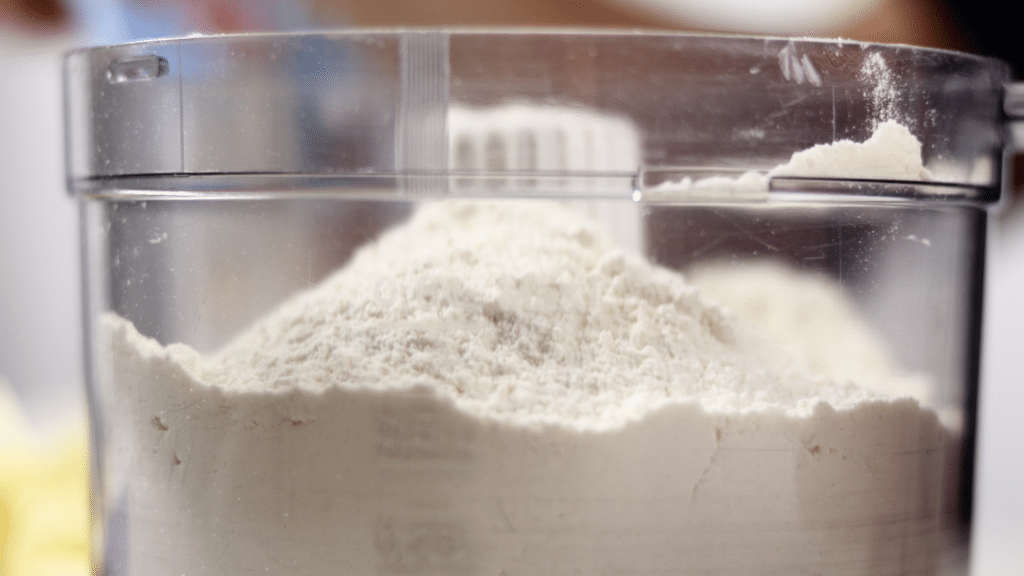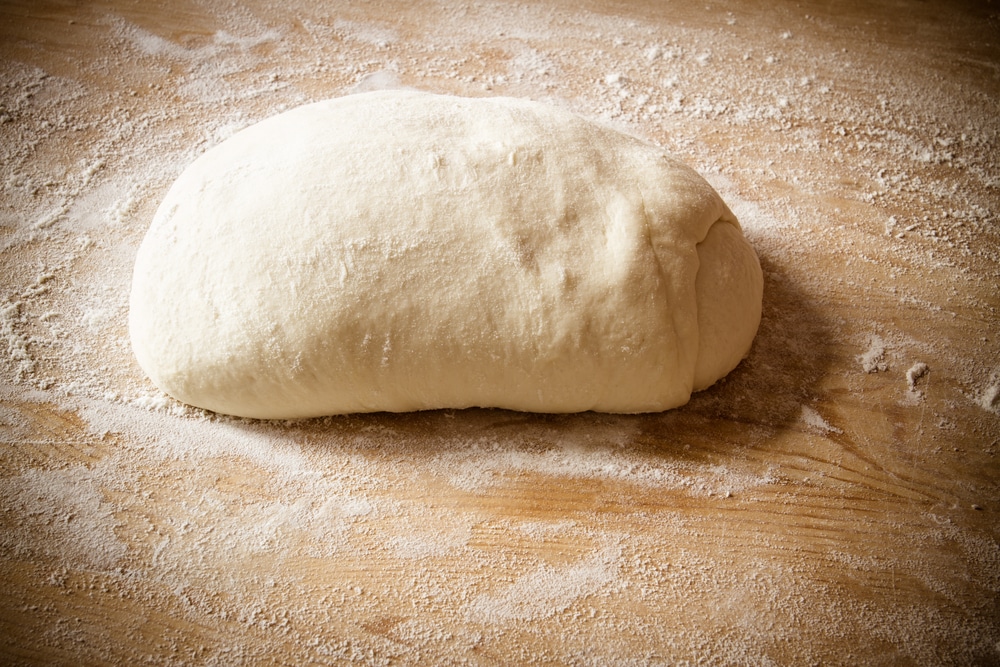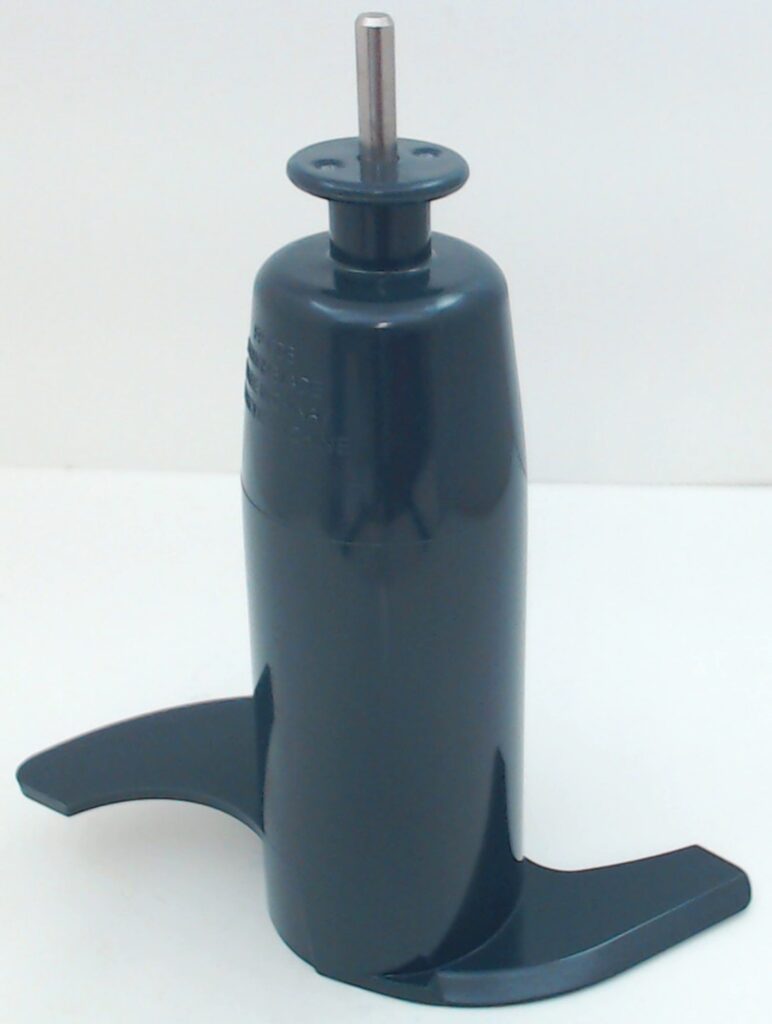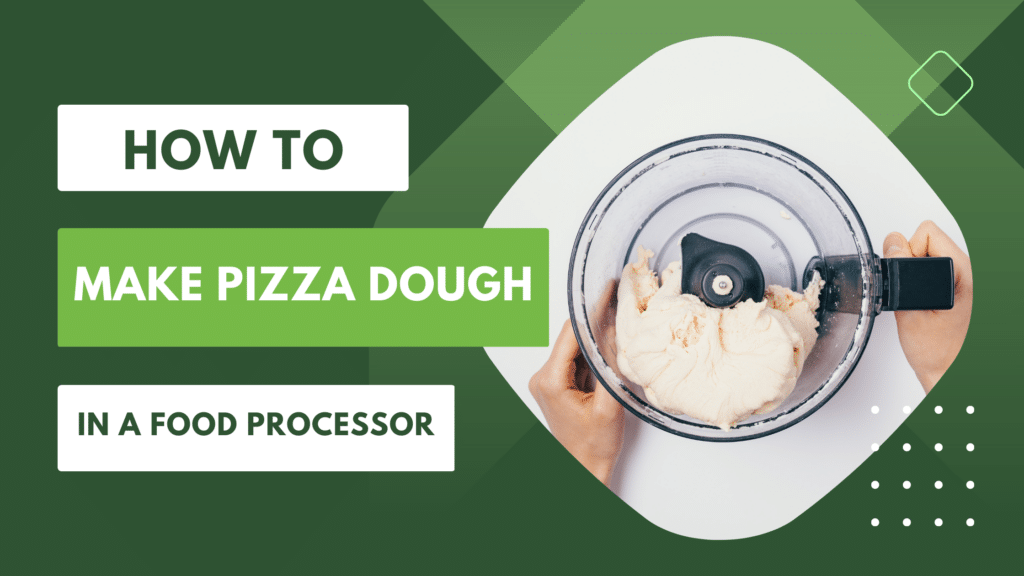Do you want to know the secret to making pizza dough in a food processor? Making pizza dough from scratch can be a fun and satisfying experience, and using a food processor can make the process even easier.
In this post, we’ll walk you through the steps of how to make pizza dough in a food processor. You’ll learn how to mix and knead the dough and tips for achieving the perfect texture and flavor.
So whether you’re a seasoned home cook or a beginner looking to expand your culinary skills, grab your food processor and prepare delicious homemade pizza dough!
Here’s What You Will Find:
Making Pizza Dough in a Food Processor
Pizza dough requires excessive mixing and kneading to activate the gluten. Instead of using your hands or a stand mixer to knead your dough, you can use a food processor to make pizza dough.
It is super easy to make pizza dough in a food processor because of the added attachments and constant friction caused by the processor as it mixes. The fast-spinning blades can make your dough more elastic than other methods because of how quickly they spin.
Dough blades are a common attachment to most food processors. However, many cooks recommend against using these because they can be flimsy and unreliable. Instead, use a standard blade that can rip and knead the dough.
How to Make Pizza Dough in a Food Processor (Step-by-Step Process)
Making pizza dough with a food processor is easy by using enough flour. It is also equally important to pour water into the food processor slowly. It is also best to make the dough a day ahead, so it will have enough time to develop structure and flavor.
Before making dough in the food processor, you must prepare your space and the ingredients. Mise en place all ingredients so you are prepared to make your pizza dough and do not run out of ingredients in the middle of cooking. Gather your ingredients and follow a pizza dough recipe to measure accordingly.

Here are the Steps When Using a Basic Pizza Dough Recipe
Step 1: Dissolve Yeast
Dissolve yeast and sugar in warm water and let it rest for roughly 3 to 5 minutes before slowly adding it to the pizza dough mixture. Allow the yeast to rest for around 10 minutes or until it is fully foamy. The dissolved yeast should appear bubbly after resting for several minutes, which will help activate the gluten when kneading it later. If you use instant yeast, you can skip this step and add the yeast directly to the flour.
Step 2: Flour surfaces
Flour all surfaces you will cover with dough, including your blade, bowl, and any surface you will knead the dough on. Flouring the food processor blade and other surfaces ensure nothing sticks while mixing it. Otherwise, the sticky texture may get stuck while it spins inside the food processor. Food processors, rolling pins, counters, trays, and your hands are all good things to cover with flour before starting the kneading process.
Step 3: Pour in wet ingredients and mix
Use a liquid measuring cup to pour in the wet ingredients. Liquid measuring cups make evenly distributing wet ingredients easier in your food processor. Add the wet ingredients until the dry ingredients form an elastic ball.
Additional flour can fix any oversaturation caused by excess water. Similarly, adding more water can help hydrate dry pizza dough.
With the dough attachment installed, briefly pulse together 250 grams of high-protein flour and 6 grams of kosher salt in the food processor. Only enough to get them together.
Start slowly adding the yeast mixture into the feed tube. The mixture will be gently stirred into your flour. The dough would shape a ball and draw away from the sides of the bowl after about 45 seconds.
Restart the pulse process, slowly add the oil into the feed tube, and then phase for another minute.
Step 4: Remove the dough and finish kneading the dough
Flour your hands, remove the pizza dough from the food processor bowl, and place it on a floured surface. The additional kneading will provide warmth which will activate the gluten and help with the elasticity. The more elastic the dough is, the better it will take shape. As a result, you get sweet, soft pizza dough.
Step 5: Form your dough
After mixing your dough in the dough processor, you can make it your ideal shape on the counter and cover it with plastic wrap. Letting the dough rise for about 6 to 8 hours, preferably overnight, is extremely important so the dough can go through the fermentation process. This will make the dough flavorful and the crust tender.
Stretch the pizza dough ball into a circular shape that is perfect for the pizza crust. A rolling pin can help make it into a ball before rolling the dough into your desired crust size. Pizza crust should be 1/2-inch thick when you finish forming your dough. It will be roughly a 1/4-inch thick when the pizza crust finishes baking.
Step 6: Let the dough rest
Finish the dough-making process by letting the pizza dough rest. It should take roughly forty-five minutes for the pizza dough to finish resting. The resting process will allow pizza dough to assume the shape of any pizza crust. Once the dough has rested long enough, it will be ready to bake.
If the dough does not take shape well, it is a sign you should knead it longer. The longer you knead your dough, the more the gluten will set in. The more the gluten is activated, the more elastic the dough will be, meaning it can take the shape of the pizza crust easier.
The trick for mixing dough in a food processor is only to use the pulse button initially and mix until the ingredients are hydrated and form a ball. Then let the dough rest for at least 5 or 20 minutes before mixing again. The resting period allows the flour to absorb the water thoroughly.
Otherwise, the food processor combines the dough before the developing gluten can handle the agitation, tearing the strands and damaging the dough. When you resume mixing, use the “On” button and mix for an additional 45 to 60 seconds. The short rest period followed by the short final mixing cycle is all you need to complete the dough.
The quick motion of a food processor’s blade will transform dough into flexible dough in minutes with little effort.
Pizza dough mixed using a food processor
The food processor also ensures that the drier ingredients are appropriately combined and that there are no undifferentiated pockets of flour, resulting in the most seamless dough in a matter of time.

Can I Knead Pizza Dough in a Food Processor?
You can knead pizza dough with the food processor method. However, they are not the best option for kneading pizza dough. Food processors knead pizza dough, creating continuous movement at an even speed. You can choose several settings to knead your dough in a food processor.
Hand-kneading creates constant friction to activate the gluten, something a food processor can easily emulate. Add water slowly as the food processor kneads the dough. Adding your water slowly will ensure that it can mix all ingredients effortlessly.
Food processors are not the best way to knead pizza dough because they cannot evenly mix all ingredients. Flour often gets stuck on the edges of the bowls, especially if you add liquids too quickly. Not all ingredients will get mixed together when using a food processor, resulting in an uneven and unmixed dough. The best way to knead the dough is by hand or a stand mixer at a low speed. Just knead the dough from the food processor for about 3 to 5 minutes. Then divide it and form it into small dough balls.
What is the Blade on a Food Processor to Make Pizza Dough?
A dough blade is a blade for the food processor made specifically for making dough. Most dough blades are plastic but can also come in various other materials. Plastic dough blades have short, blunt arms, which make it easy to rip apart and compress the dough.
Many bakers do not recommend using these dough blades because they do not equally mix all ingredients. They can be unreliable and are not as sharp as a standard mixing blade, increasing the time it takes to mix your dough. Hand-mixing is the best way to knead your pizza dough because it creates constant friction as you mix it. However, food processors decrease the time it takes significantly.
Pizza dough blades that are not appropriately floured can get sticky quickly and interrupt the kneading process. It is critical to flour all surfaces before mixing in your liquids, so you do not create a sticky mess. It can also help to add a small amount of olive oil to your mix so the ingredients do not stick together.
What Size Food Processor Do I Need for Pizza Dough?
A mid-sized food processor is suitable for making pizza dough. A mid-sized food processor is typically considered standard because of its versatility. Standard 11-cup machines are great because they can easily make large batches of pizza dough at once.
They are the best size for making pizza dough and are versatile. Medium-sized food processors do not take up a lot of space, so you can use your food processor and also have plenty of preparation space while cooking.
Can I Use a Food Processor Instead of a Dough Hook?
You can use a food processor instead of a dough hook to make pizza dough. Food processors are the quickest way to make pizza dough because they can mix the ingredients quickly. A dough hook can be more tedious and take longer than a food processor because it requires physical labor to mix the ingredients and make the pizza dough.
Using a dough hook to knead pizza dough requires much more effort than a food processor because it is laborious. Food processors are efficient and quick. They mix dough quicker than other methods and give the same effects as kneading with your hands. Kneading with your hands will always be the best method because it is the warmest and most direct way to mix ingredients at a consistent pace. However, kneading with a food processor works because the speed is constant.
What Does a Food Processor Do that a Blender Doesn’t?
The main difference between food processors and blenders is the blade attachments. Food processors have several attachments that make them great for mixing different ingredients. One of these attachments is the dough blade, explicitly made for mixing pizza dough. Most blender blades are made of one rotating blade, whereas food processor blades comprise several blades or other attachments.
There are several different speeds on food processors, including the pulse setting, which makes mixing pizza dough easier than blenders would. People often use pulse while making pizza dough because it repetitively rips and tears the dough, similar to kneading.
What Is The Best Size Food Processor for Pizza Dough?
A generic 11-cup processor is a decent fit for all those searching for a classic, mid-sized processor that can accommodate bulkier products like pizza dough and large-batch recipes. Just make sure it includes a plastic dough blade.
Though the average family would not need a skilled, restaurant-sized processor, for those who often prepare big-batch products for parties or potlucks, a massive mixer with a large 16-cup bowl would suffice.
A compact processor with a 3-cup bowl is ideal for individuals and others who plan to use their processor for cooking smaller portions of foods, liquids, dips, and more.
It can suit your requirements while reducing clean-up and taking up substantially smaller storage capacity.
Which Attachment Should You Use to Mix Pizza Dough in a Food Processor?
Plastic Dough Blade
This is a common question most of us struggle with; which attachment to mix pizza dough in a food processor? To mix pizza dough, use a kneading hook or plastic blade at the lowest speed possible.

The Last Slice
Food processors can knead the dough quickly because they create constant friction at a set speed. They are the quickest way to knead pizza dough, making them perfect for people who do not want to spend time using their hands to mix pizza dough. Flour your food processor blade before placing your dry ingredients inside, or you risk getting your wet dough stuck on the sides of the bowl and edges of the blades.
Now that you know everything about making pizza dough in food processors, you can get out of your food processor and begin making your pizza dough. Good luck making your delicious pizza!
Additional Resources

Can You Use a Food Processor to Make Pizza Dough? Here’s What You Need to Know
the PROs
So what exactly should you do to make your pizza dough? Is it possible to use a food processor to make pizza dough? Yes, you can! The food processor is the quickest, effortless way to make any dough, including pizza. It is by far the easiest dough you’ll ever make. So, in this piece of writing, we are going to show you the best way to use such a versatile kitchen gadget to make the perfect pizza dough. So let’s get started!
Enjoy!
Not a PRO? Not a Problem!
Take a pizza class to bring your pizza skills to the next level,
so you can be a PRO!
Related Posts

Costco Pizza Delivery: Find How You Can Get It Now!
the PROs
People go to Costco’s food court for many different reasons, but the cheesy slice of pizza they serve is among …

Pizza for Beginners: Don’t Buy Pizza, Make It! Here’s How to Get Started!
the PROs
You have this idea that you want to make pizza at home as opposed to ordering it, but where do you start? Don’t worry! Here you will find answers and directions to all your questions.

Pizza Toppings Under Cheese or Over Cheese? [Why the Order Matters]
the PROs
Is Pizza Cheese on Top or Bottom? Hey pizza lovers, are you wondering if you should layer pizza toppings under …
Newsletter
Subscribe to our Recipe of the Week newsletter and receive our partners’ latest recipes, tips, and discount offers.
Keep in Touch!

